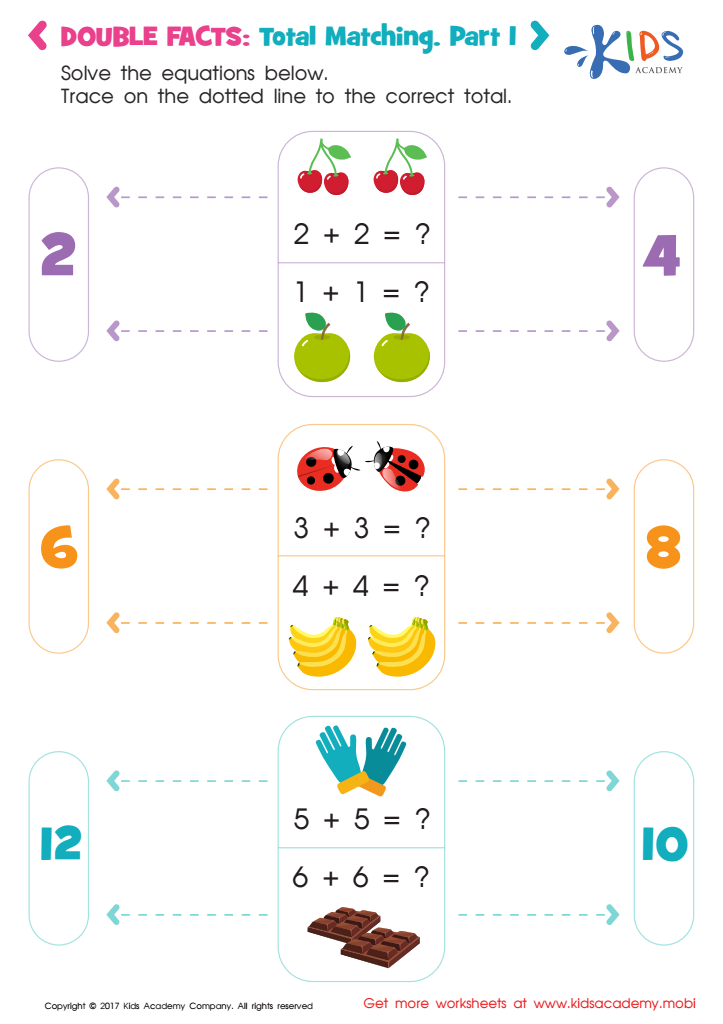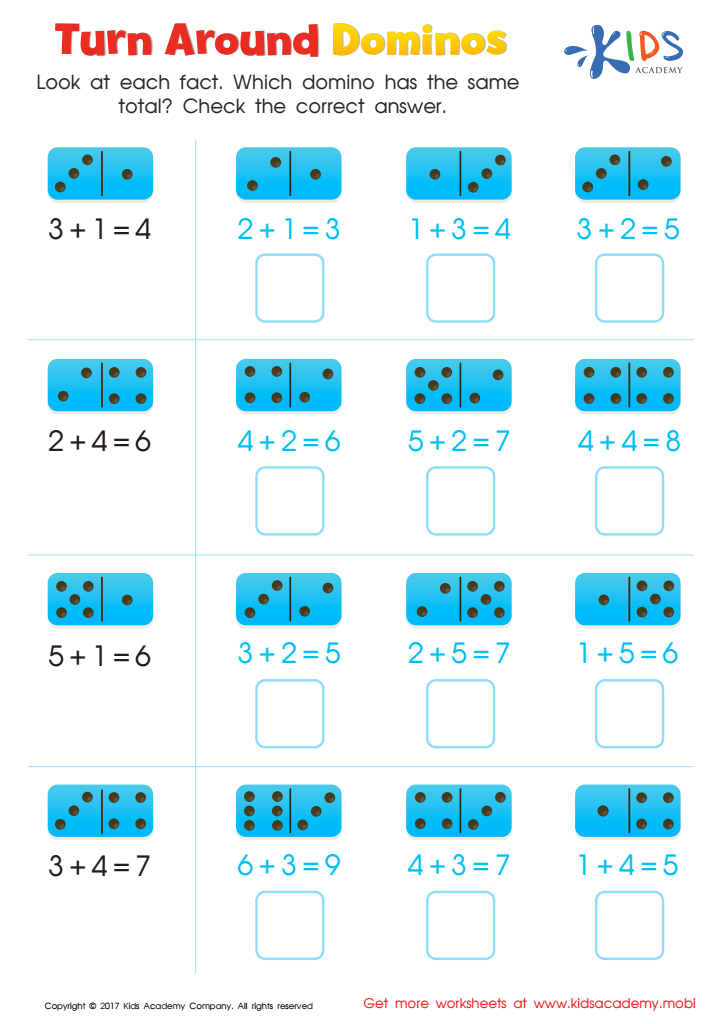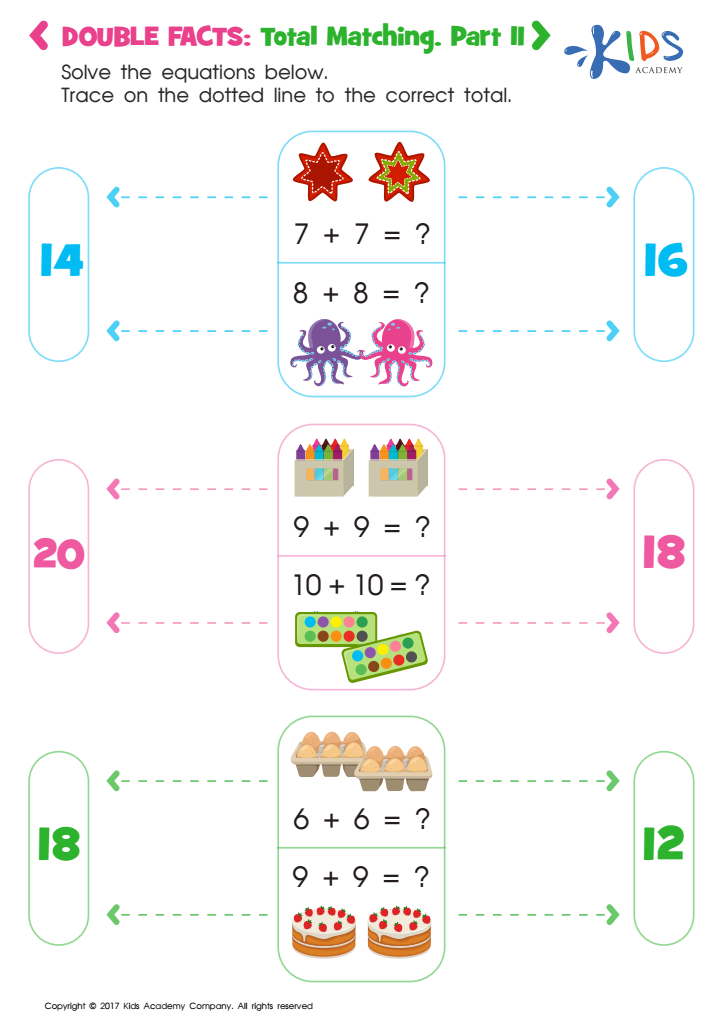Basic Facts Doubles & Turn Around Facts - Lesson for Grade 1, Chapter - Addition and Subtraction - less than 20
In the lesson on "Basic Facts Doubles & Turn Around Facts," first-grade students will embark on an engaging journey to master fundamental addition and subtraction concepts, focusing on numbers less than 20. This lesson is a crucial building block within the "Foundations in Operations Within 100" unit, designed to solidify students' understanding and fluency in basic arithmetic operations.
Throughout the lesson, students will explore the concept of double facts, where they will learn to effortlessly add numbers that are the same (e. g. , 4+4, 5+5). This concept is vital for developing mental math skills, allowing students to quickly calculate sums without relying on counting fingers or objects. The "Double Facts: Total Matching Worksheet: Part 1" and its sequel, along with the "Addition Facts: Double Dice Worksheet," provide hands-on activities that reinforce this concept through matching and dice games, making learning both fun and effective.
In addition to double facts, students will delve into the principle of "turn around facts," understanding that in addition, numbers can be added in any order and still result in the same total (e. g. , 3+7 is the same as 7+3).
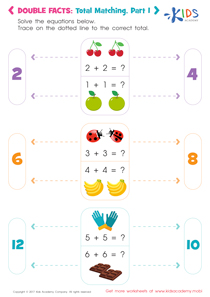
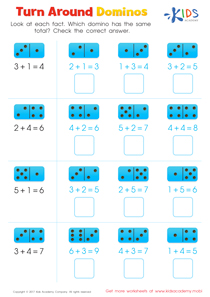

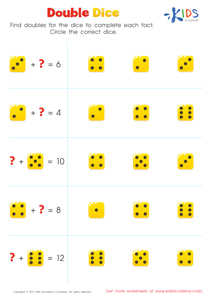
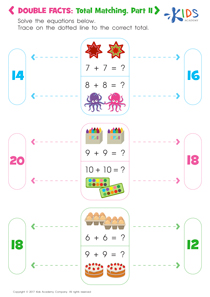
-
Activity 1 / Double Facts: Total Matching Worksheet: Part 1
Looking to take your students a bit further as they learn numbers in their mathematical exercises? This worksheet is perfectly tailored to suit your needs. Solve the equations below by tracing on the dotted line to get to the correct answer. This exercise stimulates the child’s mind to make math problems seem like play time. Using a pencil, assist your child in tracing the lines to the correct total. Then, watch as they get the hang of it and do it on their own.
-
Activity 2 / Turn Around Dominos Worksheet
Here, your child/student is encouraged to flex their mental muscles a bit more. Rather than a regular addition and subtraction exercise, this math worksheet encourages your child to be more observant. Sit with the young one and examine the dominos on the left side and their values. Next, look through the three boxes on the right side and ask your child if any of the dominos are similar to the one on the left. This exercise will require some focus and careful observation.
-
Activity 3 / Learning Double Facts
-
Activity 4 / Addition Facts: Double Dice Worksheet
Are you looking for ways to stimulate your kids’ minds more with maths? The problem is that mathematics can be such a bore sometimes. In fact, children and adults alike dread the subject. However, if you start teaching your little ones from a young age that mathematics can be fun, they would eventually have no problems with the subject. This worksheet exercise requires that your child identifies the number on the dice on the left, and finds its double on the right. The sum of the two identical dice is also displayed.
-
Activity 5 / Double Facts: Total Matching 2 Worksheet
Your child or student could be having trouble solving mathematical problems as they learn numbers. This colourful printable worksheet features simple math problems the young one could easily solve. Addition problems could be a bit stressful for your child as they are just getting the hang of counting numbers. Solve the equations in the exercise by holding your child’s hand and tracing the dotted line to the correct total.
